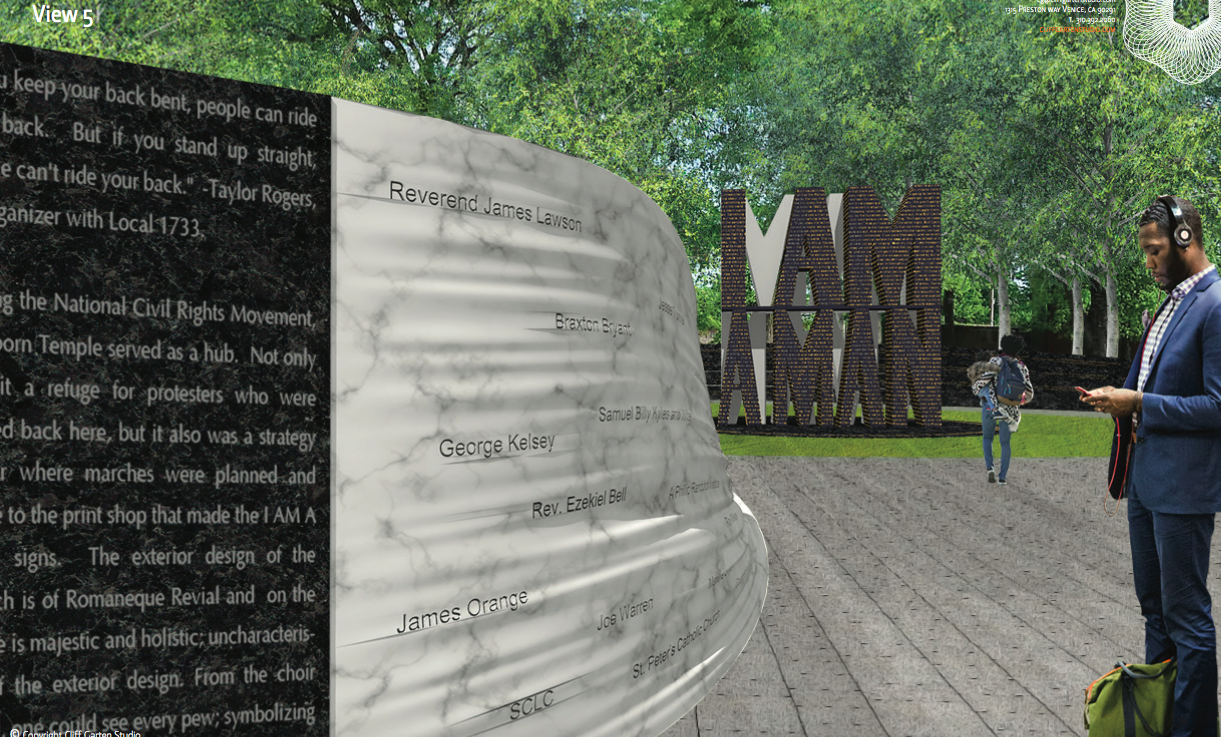We cannot understand the moral Universe. The arc is a long one, and our eyes reach but a little way; we cannot calculate the curve and complete the figure by the experience of sight; but we can divine it by conscience, and we surely know that it bends toward justice. — Theodore Parker
It’s early Tuesday, and the rising sun, having begun its annual journey back to the equator, illuminates the south side of Clayborn Temple on Hernando Street. Two painters — black men dressed in white — walk across the gravel lot, breakfast biscuits and coffee in hand, prepping themselves for another day of restoring one of Memphis’ most iconic places.
The thin morning light falls on the west tower, looming six stories high. It serves as an architectural backdrop for a magnificent, arched, stained-glass window. Squint a bit and move in close, and you could be in France, next to an ancient cathedral.
The illusion lasts only until you back away and turn your eyes to the east end of the building, where sheets of plywood, painted over in stained-glass patterns, cover the windows. That’s probably symbolic in one fashion or another, a metaphor for something. It’s clear more work needs to be done, here and elsewhere. On this gorgeous morning, I’ll leave it at that.
It was in this building and on this dusty parking lot — formerly in a city neighborhood, now in the massive shadow of FedExForum — where Memphis’ sanitation workers gathered and rallied and began their marches for justice in the winter of 1968. It was from Clayborn Temple, that the workers and their supporters, carrying signs reading “I Am A Man,” set off to change the city’s policies toward its black service workers and citizens.
But they didn’t just change Memphis; they changed the arc of American history. The sanitation workers’ strike and subsequent marches in the streets of downtown Memphis were a pivotal moment in the civil rights struggle of the 1960s, a bold step toward equality and social justice that drew Dr. Martin Luther King Jr. to our city — and ultimately — to his assassination at the nearby Lorraine Motel on April 4, 1968.
So yes, there’s a lot of history at Clayborn Temple — history that should be recognized and honored and memorialized. And that’s finally about to happen.
Just last week, the building was recognized by the National Park Service as a National Historic Landmark. And on Monday of this week, the city revealed a proposed plan — conceived with the help of the UrbanArt Commission — that will transform the temple parking lot into I Am A Man plaza.
Fifteen-foot-high, deeply three-dimensional steel letters will form the words “I Am A Man” in monumental fashion. Large stone walls featuring quotations and other writings inspired by the civil rights movement will gently funnel visitors into the space. The artist’s renderings of the project, released this week, are impressive. The timing could not be better, as 2018, the 50th anniversary of the sanitation workers strike and of Dr. King’s death, approaches. It would be wonderful if the plaza could be in place by then, but that may be a stretch.
In a city that has struggled to deal with — and remove — Confederate park names and latter-day monuments built to glorify Southern “heritage,” the proposed plaza is a beacon of positivity and hope, one that should be embraced and celebrated by all Memphians — and all Americans — who believe the moral arc of the universe does indeed bend toward justice.



